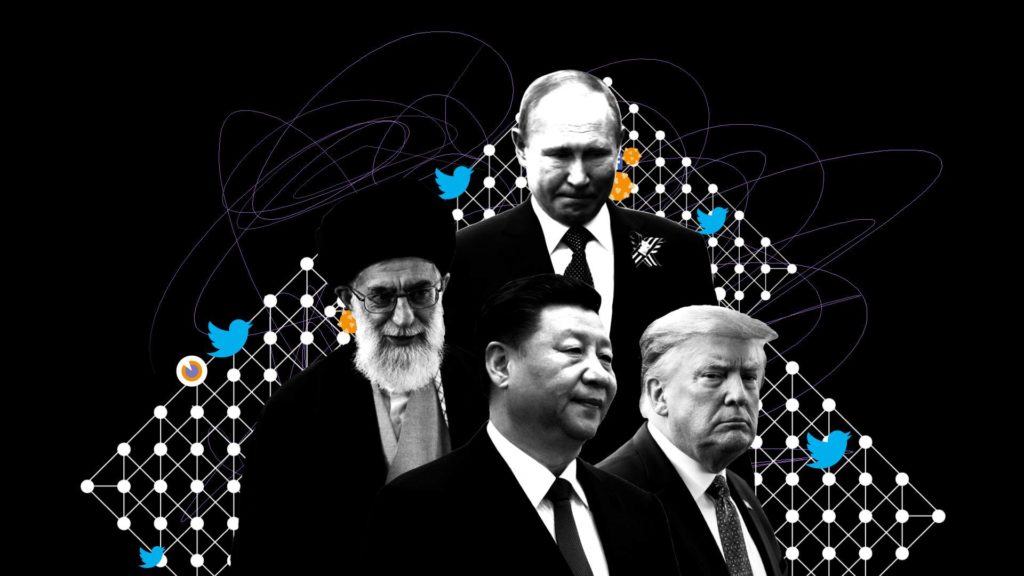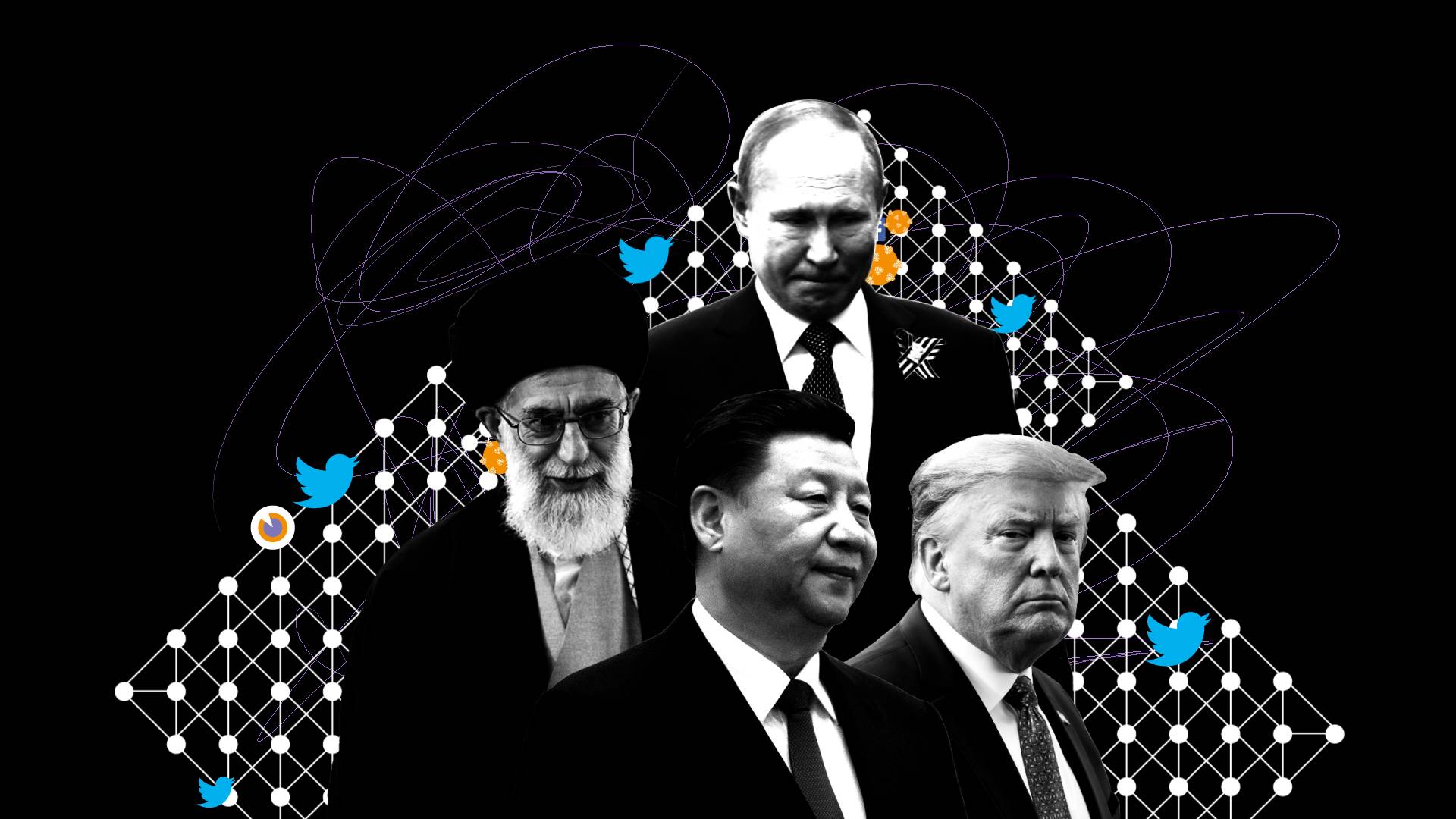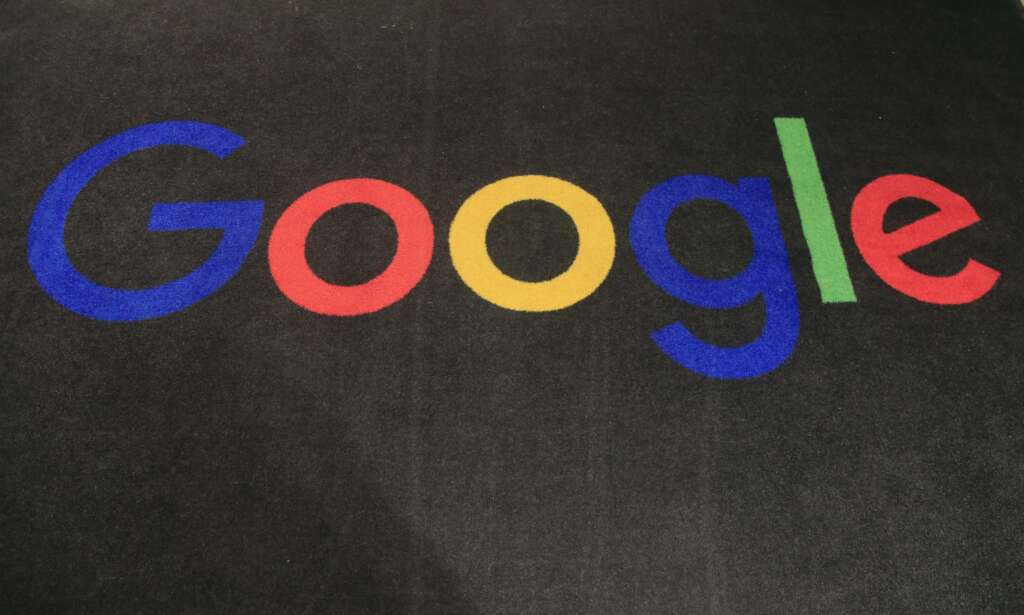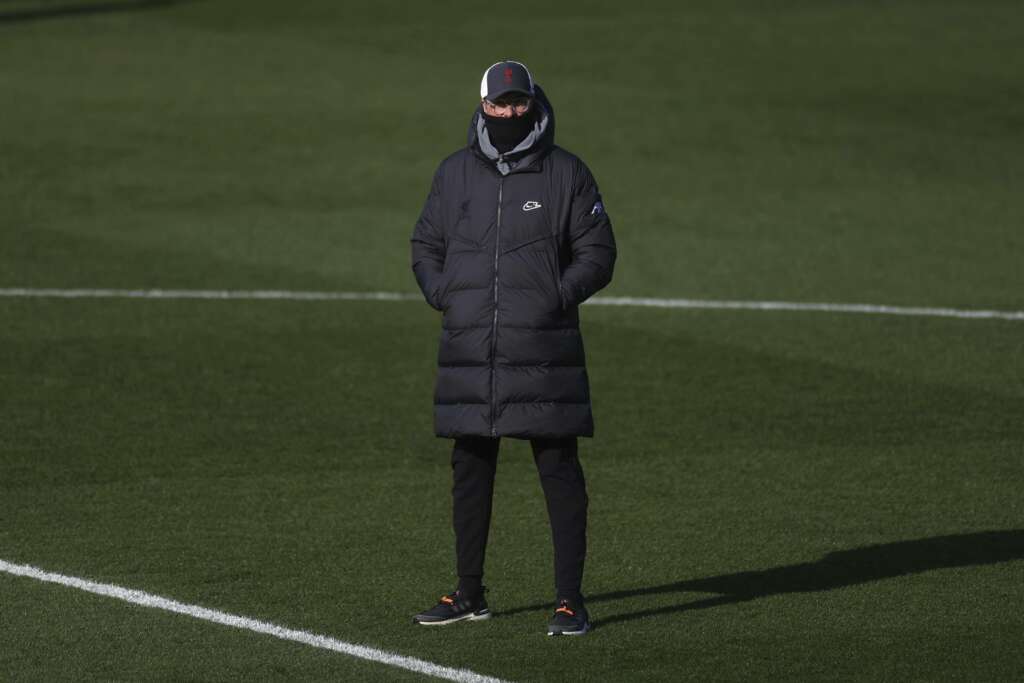
BRUSSELS (AP) — The rumors began almost as soon as the disease itself. Claims that a foreign adversary had unleashed a bioweapon emerged at the fringes of Chinese social media the same day China first reported the outbreak of a mysterious virus.
“Watch out for Americans!” a Weibo user wrote on Dec. 31, 2019. Today, a year after the World Health Organization warned of an epidemic of COVID-19 misinformation, that conspiracy theory lives on, pushed by Chinese officials eager to cast doubt on the origins of a pandemic that has claimed more than 2 million lives globally.
From Beijing and Washington to Moscow and Tehran, political leaders and allied media effectively functioned as superspreaders, using their stature to amplify politically expedient conspiracies already in circulation. But it was China — not Russia – that took the lead in spreading foreign disinformation about COVID-19’s origins, as it came under attack for its early handling of the outbreak.
A nine-month Associated Press investigation of state-sponsored disinformation conducted in collaboration with the Atlantic Council’s Digital Forensic Research Lab, shows how a rumor that the U.S. created the virus that causes COVID-19 was weaponized by the Chinese government, spreading from the dark corners of the Internet to millions across the globe. The analysis was based on a review of millions of social media postings and articles on Twitter, Facebook, VK, Weibo, WeChat, YouTube, Telegram and other platforms.
Chinese officials were reacting to a powerful narrative, nursed by QAnon groups, Fox News, former President Donald Trump and leading Republicans, that the virus was instead manufactured by China.
China’s Ministry of Foreign Affairs says Beijing has used its expanding megaphone on Western social media to promote friendship and serve facts, while defending itself against hostile forces that seek to politicize the pandemic.
“All parties should firmly say ‘no’ to the dissemination of disinformation,” the ministry said in a statement to AP, but added, “In the face of trumped-up charges, it is justified and proper to bust lies and clarify rumors by setting out the facts.”
The battle to control the narrative about where the virus came from has had global consequences in the fight against COVID-19.
By March, just three months after COVID-19 appeared in central China, belief that the virus had been created in a lab and possibly weaponized was widespread, multiple surveys showed. The Pew Research Center found, for example, that one in three Americans believed the new coronavirus had been created in a lab; one in four thought it had been engineered intentionally. In Iran, top leaders cited the bioweapon conspiracy to justify their refusal of foreign medical aid. Anti-lockdown and anti-mask groups around the world called COVID-19 a hoax and a weapon, complicating public health efforts to slow the spread.
“This is like a virus, like COVID, a media pathogen,” said Kang Liu, a professor at Duke University who studies cultural politics and media in China, comparing the spread of disinformation about the virus to the spread of the virus itself. “We have a double pandemic — the real pathological virus and the pandemic of fear. The fear is what is really at stake.”
SPREADING RUMORS
On Jan. 26, a man from Inner Mongolia posted a video claiming that the new virus ravaging central China was a biological weapon engineered by the U.S. It was viewed 14,000 times on the Chinese app Kuaishou before being taken down. The man was arrested, detained for 10 days and fined for spreading rumors.
People’s Daily, the Chinese Communist Party’s mouthpiece, broadcast news of his detention in early February, showing the man, face pixelated, wrists shackled, and legs caged in a chair. It was a stern reminder to the citizens of China that fake news can lead to arrest and part of a broader effort by Chinese state media to debunk COVID-19 conspiracies.
But just six weeks later the same conspiracy would be broadcast by China’s foreign ministry, picked up by at least 30 Chinese diplomats and missions and amplified through China’s vast, global network of state media outlets.
During those six weeks, China’s leadership came under intense internal criticism. On Feb. 7, Li Wenliang, a Chinese doctor punished for circulating an early warning about the outbreak, died of COVID-19. The outpouring of grief and rage sparked by Li’s death was an unusual – and for the ruling Communist Party, unsettling — display in China’s tightly monitored civic space.
Meanwhile, powerful voices in the U.S. — from former President Trump to congressional Republicans — were working to rebrand COVID-19 as “the China virus,” amplifying fringe theories that it had been engineered by Chinese scientists.
Social media accounts that appeared to be pro-Trump or QAnon followers pushed the disinformation, repeatedly retweeting identical content that claimed China created the virus as a bioweapon, researchers at the Australia Institute’s Centre for Responsible Technology found.
As U.S. rhetoric intensified, China went on the offensive. On Feb. 22, People’s Daily ran a report highlighting speculation that the U.S. military brought the virus to China, pushing the story globally through inserts in newspapers such as the Helsinki Times in Finland and the New Zealand Herald.
The New Zealand Herald said it has an “ad hoc commercial relationship with People’s Daily,” labels their content as sponsored and reviews it before publication. “Upon further review of the story that you have referred to, we have removed this particular item from our website,” a spokesman said in an email.
The Helsinki Times said it has a “barter-exchange” content agreement with People’s Daily, whose content it labels but does not vet. “We believe that the western media coverage is at times extremely one-sided and biased,” said Alexis Kouros, the editor of the Helsinki Times. “Even though People’s Daily is state-owned, like the BBC, we believe it is beneficial for the global audience to have both sides of stories.”
As China embraced overt disinformation, it leaned on Russian disinformation strategy and infrastructure, turning to a long-established network of Kremlin proxies in the West to seed and spread messaging.
“One was amplifying the other…How much it was command controlled, how much it was opportunistic, it was hard to tell,” said Janis Sarts, director of the NATO Strategic Communications Centre of Excellence, based in Riga, Latvia. Long-term, he added, China is “the more formidable competitor and adversary because of the technological capabilities they bring to the table.”
‘THE TRUTH AS I SEE IT’
In January, long before China began overtly spreading disinformation, Russian state media swept in to legitimize the theory that the U.S. engineered the virus as a weapon.
On Jan. 20, the Russian Army’s media outlet, Zvezda, announced that the outbreak in China was linked to a bioweapons test, citing a four-time failed political candidate named Igor Nikulin.
Nikulin claims to have worked with the United Nations on disarmament in Iraq from 1998 to 2003, including as an adviser to former U.N. Secretary-General Kofi Annan.
But the U.N. has no record of his service. Richard Butler, the lead U.N. weapons inspector at the time, told AP he’s never heard of him. Neither has Hans Corell, who served as Under-Secretary-General for Legal Affairs and Legal Counsel of the United Nations from 1994-2004, where he worked closely with Annan.
Nikulin said records of his U.N. work may have been destroyed and stuck by his theory that COVID is a U.S. bioweapon – a claim that has been repeatedly debunked. “What other proof is needed?!” he said in an email to AP.
Over the next two months, more than 70 articles appeared in pro-Kremlin media making similar bioweapons claims in Russian, Spanish, Armenian, Arabic, English and German, according to AP’s analysis of a database compiled by EUvsDisinfo, which tracks disinformation for the European Union.
Online journals identified by the U.S. State Department and others as pro-Russian proxies picked up the bioweapons narrative, enhancing its reach and resonance.
Russian politicians joined the chorus. Parliamentarian Natalia Poklonskaya argued that the novel coronavirus could be a biological weapon created “by those who want to rule the planet” to undermine China. Shortly after, Vladimir Zhirinovsky, the nationalistic leader of the Liberal Democratic Party of Russia, suggested that the U.S. and its greedy pharmaceutical companies were to blame.
Meanwhile, Nikulin kept flogging his theory, which morphed as the pandemic spread from an attack on China to an attack on Trump. Despite his inconsistency and questionable bona fides, by April, Nikulin had appeared at least 18 times on Russian television. U.S. officials also said Russian intelligence had been covertly spreading COVID-19 disinformation, including claims that the virus was a U.S. bioweapon.
On Jan. 23, Beijing began to roll out the largest medical quarantine in modern history, sealing tens of millions of people at the epicenter of the outbreak in central China. The images were harrowing, as people desperate to slip out thronged train stations.
Shortly after 11 a.m. the next morning, Francis Boyle, a Harvard-trained law professor at the University of Illinois, emailed a “worldwide alert” to 300 contacts warning, without evidence, that China had been developing the coronavirus as a bioweapon at a biosafety lab in Wuhan.
Over the next few weeks, Boyle refined his theory, now asserting that Chinese scientists had not developed the virus themselves, but taken it from a North Carolina laboratory.
“This is clearly an offensive biological warfare agent,” Boyle told conspiracy theorist Alex Jones on a Feb. 19 Infowars broadcast.
The theory spread via outlets like One America News Network, a pro-Trump channel, Iran’s Press TV, Global Research and its erstwhile partner, the Strategic Culture Foundation, an online journal that masquerades as independent but is actually directed by Russia’s foreign intelligence service, according to the U.S. State Department.
Boyle told the AP his conclusions are based on research and that he can’t stop conspiracy theorists or foreign governments from using his claims for their own ends.
“My job is to tell the truth as I see it,” he said.
“INFORMATION LAUNDERING”
On March 9, a public WeChat account called Happy Reading List reposted an essay claiming the U.S. military created SARS-CoV-2, the virus that causes COVID-19, at a lab at Fort Detrick, in Maryland, and loosed it in China during the Military World Games, an international competition for military athletes, held in Wuhan in October 2019.
The account, which has been suspended, was registered in May 2019 by a woman from Henan province in central China, who did not reply to messages. It’s not clear who first wrote the article, which can still be found on other WeChat accounts.
The next day an anonymous petition appeared on the White House’s now-defunct “We the People” portal. It urged U.S. authorities to clarify whether the virus had been developed at Fort Detrick and leaked from the lab. The petition was lavishly covered by China’s state media, despite getting only 1,426 signatures, far shy of the 100,000 needed to merit a response from the White House.
On March 11, Larry Romanoff, who claims to be a former management consultant based in Shanghai, posted an article on Global Research Canada that cribbed heavily from the Happy Reading List posting, citing it as a source.
“There have been a number of stories where the origin of a story is in Russian-controlled space but it’s picked up by Global Research and then put forward as their own story. Then you get Russian media saying western analysts in Canada say that. We call that information laundering,” said Sarts, the NATO StratCom director. “They have been helpful for a long time to Russian information operations and recently to the Chinese as well.”
Neither Romanoff nor Global Research responded to requests for comment.
The day of Romanoff’s article, the World Health Organization officially designated the COVID-19 outbreak a pandemic.
Zhao Lijian, a spokesman for China’s foreign ministry, spent part of the next afternoon retweeting cute dog videos. Then, late that night, he sent out a series of tweets over 13 minutes that launched what may be China’s first truly global digital experiment with overt disinformation.
“When did patient zero begin in US?” Zhao wrote. “How many people are infected? What are the names of the hospitals? It might be US army who brought the epidemic to Wuhan. Be transparent! Make public your data! US owe (sic) us an explanation!”
The next morning, Zhao urged his hundreds of thousands of Twitter followers to read and retweet Romanoff’s piece. An hour and a half-hour later he gave Global Research another boost, referring his followers to an earlier Romanoff article that cited Chinese state media reporting to cast doubt on the origins of the virus.
Twitter later added a fact-check warning to Zhao’s tweet about the US Army – but only in English. An identical post in Mandarin carried no such alert. Twitter also put a fact-checking label on only one of Zhao’s two reposts of Global Research content.
A Twitter spokesperson said that the platform has expanded its policies to deal with misleading COVID-19 information but did not address specific posts flagged by AP.
Zhao’s tweets were now global news, and they hijacked mainstream discussion of the coronavirus. On Twitter alone, Zhao’s aggressive spray of 11 tweets on March 12 and 13 was cited over 99,000 times over the next six weeks, in at least 54 languages, according to analysis conducted by DFRLab. The accounts that referenced him had nearly 275 million followers on Twitter – a number that almost certainly includes duplicate followers and does not distinguish fake accounts.
Influential conservatives on Twitter, including Donald Trump Jr., hammered Zhao, propelling his tweets to their largest audiences.
China’s Global Times and at least 30 Chinese diplomatic accounts, from France to Panama, rushed in to support Zhao. Venezuela’s foreign minister and RT’s correspondent in Caracas, as well as Saudi accounts close to the kingdom’s royal family also significantly extended Zhao’s reach, helping launch his ideas into Spanish and Arabic.
His accusations got uncritical treatment in Russian and Iranian state media and shot back through QAnon discussion boards. But his biggest audience, by far, lay within China itself — despite the fact that Twitter is banned there. Popular hashtags about his tweetstorm were viewed 314 million times on the Chinese social media platform Weibo, which does not distinguish unique views.
Late on the night of March 13, Zhao posted a message of gratitude on his personal Weibo: “Thank you for your support to me, let us work hard for the motherland 💪!”
CONTAGION
The same day Zhao tweeted that the virus might have come from the U.S. Army, Iran’s Supreme Leader Ali Khamenei also announced that COVID-19 could be the result of a biological attack.
State media outlets reinforced Khamenei’s message, drawing on foreign sources for validation. Tasnim News, for example, quoted Nikulin, the self-proclaimed Russian bioweapons expert, to suggest the U.S. engineered the virus to target China. Javan Online quoted Zhao’s tweets to claim Chinese officials had evidence the U.S. was behind the pandemic.
Military and religious leaders in Iran repeatedly referred to the virus as a U.S.-made bioweapon. Their remarks were, in turn, amplified by Russian media and picked up in China, where they fueled further speculation.
The International Union of Virtual Media (IUVM), an Iranian network that has been purged repeatedly by Facebook, Google and Twitter, activated a network of websites and covert social media accounts to accuse the U.S. of engineering the virus and praise the leadership and benevolence of China.
Khamenei again cited the conspiracy theory that the virus was made in America during his annual Persian New Year speech on March 22 — this time as justification for refusing U.S. assistance.
“I do not know how real this accusation is but when it exists, who in their right mind would trust you to bring them medication?” Khamenei told the nation. “Possibly your medicine is a way to spread the virus more.”
That same day, the first of two cargo planes loaded with doctors and supplies for a 50-bed field hospital from Doctors Without Borders landed in Iran.
On March 23, Iran’s Ministry of Foreign Affairs tweeted a Global Research reprint of an article from Chinese state broadcaster CGTN that questioned the origin of the coronavirus, again suggesting it had been made in a U.S. government lab at Fort Detrick.
The next day, Iran’s Ministry of Health withdrew permission for Doctors Without Borders to deliver COVID-19 aid.
A MEDIA PATHOGEN
Ten days after Zhao’s first conspiratorial tweets, China’s global state media apparatus kicked in to push the theory that Zhao, and now Khamenei, were broadcasting.
“Did the U.S. government intentionally conceal the reality of COVID-19 with the flu?” asked a suggestive op-ed in Mandarin published by China Radio International on March 22. “Why was the U.S. Army Medical Research Institute of Infectious Diseases at Ft. Detrick in Maryland, the largest biochemical testing base, shut down in July 2019?”
Within days, versions of the piece appeared more than 350 times in Chinese state outlets, mostly in Mandarin, but also around the world in English, French, Italian, Portuguese, Spanish and Arabic, AP found.
The story flew across China, through social media accounts run by police, prosecutors, propaganda departments, anti-cult associations and Communist Youth Leagues. Seven prisons in Sichuan province, five provincial and municipal traffic radio stations, and a dozen accounts run by state media giant CCTV also pushed it out.
China’s Embassy in France promoted the story on Twitter and Facebook. It appeared on YouTube, Weibo, WeChat and a host of Chinese video platforms, including Haokan, Xigua, Baijiahao, Bilibili, iQIYI, Kuaishou and Youku. A seven-second version set to driving music appeared on Douyin, the Chinese version of TikTok.
“Clearly pushing these kinds of conspiracy theories, disinformation, does not usually result in any negative consequences for them, ”said Mareike Ohlberg, a senior fellow in the Asia Program of the German Marshall Fund.
AP found the story was viewed over 7 million times online, with more than 1.8 million comments, shares or reactions. Those numbers are an undercount because many platforms did not publish metrics, and they don’t account for television viewership or circulation in closed groups. Accounts promoting the content had a combined total of over 817 million followers, though many are likely to be duplicates or fakes.
Conspiracies brewing in the United States reinforced China’s messaging. In late March, George Webb, a for-profit conspiracy theorist in Washington D.C., doxed a U.S. Army reservist as Patient Zero, claiming on YouTube that she brought the virus from Fort Detrick to Wuhan during the October military games.
Webb’s video circulated widely in China and was picked up by state-run Global Times. The falsely accused woman got death threats and Webb’s video was pulled from YouTube, but it’s still live in China on Weibo, where it has accrued millions of views.
IN SEARCH OF AN ENDING
In April, Russia and Iran largely dropped the bioweapon conspiracy in their overt messaging. They had a more pressing concern: Surging numbers of dead.
China carried on.
Beijing was besieged by demands for accountability. In the U.S., there were calls for a “pandemic tariff” and canceling U.S. debt with China. Republicans in Congress began introducing legislation to strip China of its sovereign immunity so Americans could sue.
Australian officials called for an inquiry into the origins and spread of coronavirus. China’s ambassador to Australia, Cheng Jingye, issued a veiled threat. “Maybe the ordinary people will say, ‘Why should we drink Australian wine? Eat Australian beef?’” he said.
Within a month, China banned beef from four big Australian producers and slapped an 80% tariff on Australian barley — moves widely seen as retribution, though China has denied that charge.
Chinese officials and state media continued to promote made-in-America COVID-19 conspiracies.
State broadcaster CGTN jumped in on May 16, releasing a slick documentary about Fort Detrick set to spooky music that has been viewed on its YouTube channel more than 82,000 times. YouTube has not flagged the video as state-sponsored content, despite a 2018 policy to label government-funded videos. A YouTube spokesperson said that because the video is about COVID-19, it was labeled with an information panel about the virus instead of the publisher.
The video has been played on China’s Bilibili platform 378,000 times and broadcast in English, French, Spanish, Arabic, Indonesian, Filipino — as well as by NTV, a Houston TV station that failed to note the content was Chinese government propaganda.
NTV said it has removed the video flagged by AP. “I have warned our newsroom department for the future,” said Navroz Prasla, the CEO of NTV, which says it is the largest South Asian TV network in North America.
In July and August, Zhao, the foreign ministry spokesman, rekindled the Fort Detrick conspiracy in Tweets that have not been flagged for fact-checking: “Much remains unclear about US’ #FortDetrick and over 200 bio labs in the world,” he wrote on Aug. 11.
On Jan. 14, 2021, a team from the World Health Organization landed in China to investigate the origins of the outbreak. The next day, in one of the final acts of the Trump administration, the U.S. State Department put out a “Fact Sheet” stating that the pandemic could be the result of a leak from the Wuhan Institute of Virology, which it claimed has collaborated on secret projects with China’s military.
China’s Ministry of Foreign Affairs condemned those allegations as “the ‘last-day madness’ of ‘Mr. Liar.’”
“I’d like to stress that if the United States truly respects facts, it should open the biological lab at Fort Detrick, give more transparency to issues like its 200-plus overseas bio-labs, invite WHO experts to conduct origin-tracing in the United States,” spokeswoman Hua Chunying said at a Jan. 18 press conference.
Her remarks went viral in China.
COVID-19 disinformation has been good for China’s Ministry of Foreign Affairs. Within China, Zhao and his colleagues have a growing fan base and their followers on Twitter have soared. Zhao now has over 879,000 Twitter followers.
Questions have been raised about how much of this audience is real and how much is from fake accounts — speculation China’s Ministry of Foreign Affairs said is groundless.
“Spreading disinformation about the epidemic is indeed spreading a ‘political virus,’” the ministry told AP. “False information is the common enemy of mankind, and China has always opposed the creation and spread of false information.”
__
Associated Press reporters David Klepper, Farnoush Amiri, Beatrice Dupuy, Dake Kang, Peter Hamlin, Jeannie Ohm, Allen Breed, Francois Duckett and news researcher Si Chen contributed to this report.
Follow Kinetz on Twitter at https://twitter.com/ekinetz
__
Contact AP’s global investigative team at Investigative@ap.org
Copyright © 2021 . All rights reserved. This website is not intended for users located within the European Economic Area.



